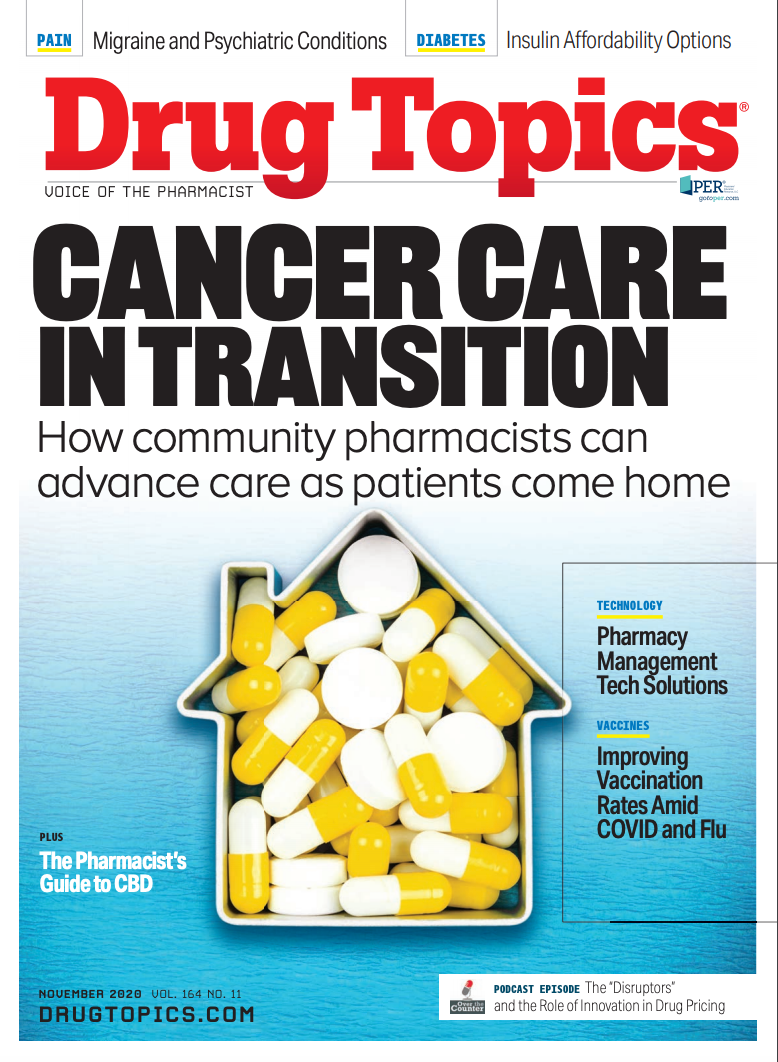Inpatient Pharmacy-Based Pain Management Service Improves Outcomes
A study presented during PAINWeek 2020 Live Virtual Conference highlights the role of e-consultations in reducing opioid use.

Implementing a dedicated inpatient pharmacy-based pain management service through electronic consultations (e-consults) can help improve patient outcomes, according to a poster presented during the PAINWeek 2020 Live Virtual Conference, held September 11-13, 2020.1
In 2018, The Joint Commission published updated recommendations regarding the use of opioids, with the guidance that hospitals create and establish policies and procedures for review of pain regimens by pain specialists.
“In the inpatient setting, studies have shown that more than 60% of inpatients experience incomplete or inadequate pain relief,” study author Chung De (Derek) Joe, PharmD, with the VA Long Beach Healthcare System (VABLHS), reported.
To address inappropriate opioid prescribing, VABLHS implemented an Inpatient Pain Pharmacist E-Consult Service. The service involves the review of patients electronic medical records and strategies to reduce high-dose opioid analgesics and provides recommendations for complex pain-management cases. The data highlighted the role of the pharmacy-based pain management service in an inpatient setting. In particular, the study demonstrated the eect of the e-consult service at VABLHS on changes in morphine equivalent daily dose (MEDD) at discharge and post discharge.
In the study, which consisted of a retrospective database chart review, the investigators examined patients who received an inpatient pain pharmacist e-consult from January 1, 2018, to August 31, 2019. To evaluate clinical outcomes, these patients also were matched to a cohort of patients receiving long-acting/extended-release (ER) opioids (fentanyl transdermal system, morphine sustained-release, methadone) who did not receive an e-consult within the same period.
Overall, 75 patients received an inpatient pain pharmacist e-consult: 372 pharmacologic and 56 nonpharmacologic recommendations were made, with acceptance rates of 51.3% and 41.1%, respectively.
Key results from the study showed:
- The most common opioid therapy changes accepted by inpatient providers included immediate-release (IR) opioid taper (76.2%), IR opioid titration (50%), and IR opioid initiation (46.2%).
- The most common nonopioid therapy changes were for nonsteroidal antiinflammatory drug (NSAID) discontinuation (71.4%), anticonvulsant initiation (67.5%), and topical analgesic initiation (61.3%).
- Pharmacologic recommendations such as antidepressant taper/discontinuation, APAP/ tramadol taper/discontinuation, and NSAID initiation were not commonly accepted.
- Top accepted referrals were to substance abuse (84.6%) and outpatient pain clinics (75%).
- Recommendations for physical therapy, palliative care, and psychiatry/mental health were not as commonly accepted.
The average MEDD for the e-consult group was 70.5 mg/day at admission, 65.2 mg/day at discharge, and 50.1 mg/day at 90 days post discharge. In the non–e-consult group, the average MEDD was 68.8 mg/day at admission, 70.0 mg/day at discharge, and 63.1 mg/day at 90 days post discharge, the results showed.
The investigators concluded that, regardless of the time point, patients who received inpatient e-consult services demonstrated significant reductions in MEDD from baseline compared with patients who did not receive these services. “In terms of future directions, we would like to establish a dedicated inpatient pain pharmacist team to monitor patients longitudinally,” Joe concluded.
Reference
1. Joe CD, Pham TC, Sevak RJ, Moon YSK. Impact of inpatient pain pharmacist e-consults on post-discharge morphine equivalent daily doses. Presented at: PAINWeek 2020 Live Virtual Conference; September 11-13; virtual. https://3002a505d4f8666b1f13-6d0524d9c8a5052ce15209ae3ecb39a3.ssl.cf1.rackcdn.com//1435336-1599233380.pdf
